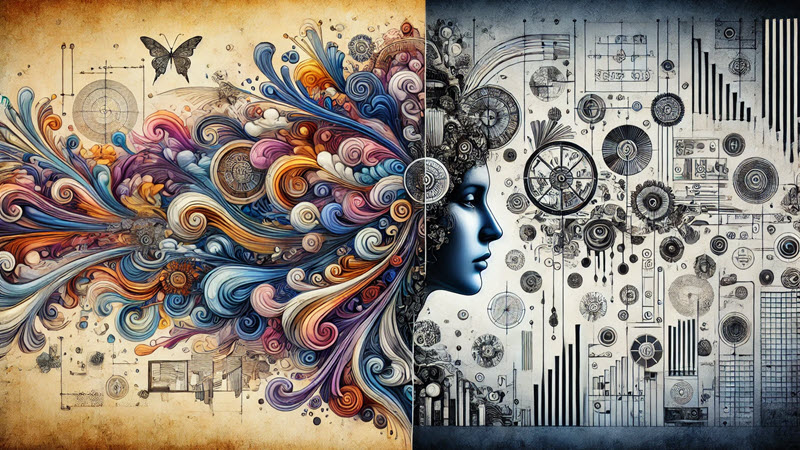
As a creative, I struggle at times with many stereotypical issues other creatives face in the technical writing field. I work best at night, my brain is thinking of zillions of things at once, I generally don’t do things in a linear fashion, and my creativity sometimes inhibits the project’s need for clarity. As a creative, I wish that my audience would have an experience though having an emotional experience isn’t the ideal outcome for the project.
Other issues that creatives struggle with include transforming their language from the figurative to the literal, using too many words when fewer are required, working with colleagues who seem more serious or literal than you, and struggling to meet deadlines. You may relate to some or all of these issues. Ultimately, if you are a creative entering the technical writing field, you face various and unique struggles.
You also most likely have critical skills that others may not be able to fill:
- High level of adaptability and a visionary, holistic diagnosis of projects and objectives
- Affinity for continuous quality assurance and process improvement
- Positive approach to handling constructive criticism
- Ability to view the content experience from the audience perspective
While turning your creativity into a usable technical skill can prove challenging, you can meet the challenges by working on the areas that may cause difficulty before they become problems.
Adaptability: Going from global to linear work styles
At the beginning of my career, I worked with a client and had a typical information gathering meeting. During our first hour-long meeting I did what I always did and asked him questions about the project that seemed to him random and unconnected. His initial patience devolved to frustration with the randomness. He said to me, “You should just give me a list of questions to answer instead of this.” Although working linearly conflicts with my natural style and personality, I learned that while working with clients, the steps we take need to make sense to them.
You can work through this challenge by documenting your process. Ask yourself, what are the steps you need to create this project from scratch? Which elements require you to be in your creative, nonlinear state to get it done versus a linear approach to gather information? If there are times when you must ask random questions to gain a deeper knowledge of the subject and the project, make your client aware that this is part of your process of creating the best outcome for their needs. Give them a time limit (30-45 minutes) and if they begin to feel frustrated, write down your questions and break up these sessions into smaller chunks.
When vision overwhelms your client
As a creative, you are most likely a visionary. You can see the entire project before it’s finished. This is an amazing skill, but it can frustrate you if others can’t see it, and it may frustrate your clients who perceive that you are speaking over their heads.
There are times when we creatives want to share our thoughts and our vision with our clients all at once. We want them to join in our excitement for the project so they can see what we see. This can be beneficial to some clients but not all.
We must remember that most of our clients seek our help to do this–to make their desired outcome into a reality. Some clients have tried to complete the project on their own but found themselves stuck in the first steps and couldn’t move forward. They realized that they need a visionary like you to complete the project successfully.
Sharing your vision all at once can be overwhelming and frustrating for them. While providing a summary of how the project will proceed is important, you are doing them a service by taking on the bulk of the project. Reassure them that you will only use their time when absolutely needed. Look for ways to share small bits throughout the project and wow them at the end with the final result.
Manage misconceptions and expectations
One of the most common problems writers encounter when working on someone’s project is that when the client sees the finished product, they think it was easy to do. They sometimes say, “Well I could have done that.”
While we are under a microscope in managing the project, clients don’t often see how much brain power, experience, editing, and attention to detail it took to get the project to look seamless. I solve this problem by periodically asking my clients strategic questions that I think may overwhelm them, and for which they may not know the answer. I have had clients respond to these questions like, “Well, what would you do?” This type of response is ideal.
This is not a trick to overwhelm them, but an opportunity to both work through the possibilities verbally and to get them to see the complexity of my thought process behind their project. Instead of them thinking, “Well, that was easy” at the end of the project, I want them to think, “Wow that was more complicated than I realized, and you handled it all well.” These strategic question and answer sessions also give me time to verbally process how to overcome obstacles.
Ultimately, time and experience will allow you to bridge the gap between your creative brain and technical writing projects. As you continue, document your process, note areas of improvement in clarity, and continue to grow with each project you complete.